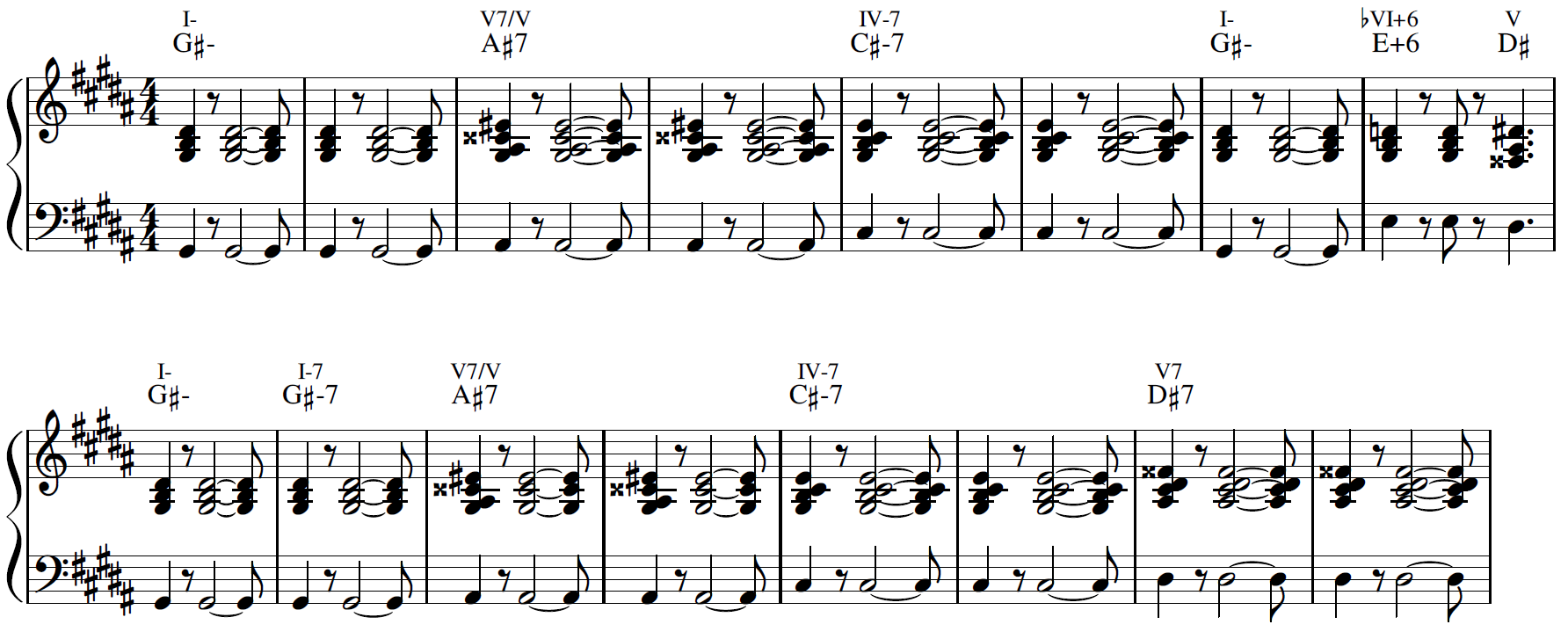“Strange” is a song about a mysterious stalker, shadowing the narrator through the dark streets of Paris late at night. The lyrics are sinister and unsettling; just read them without the music:
Strange, I’ve seen that face before,
Seen him hanging ’round my door,
Like a hawk stealing for the prey,
Like the night waiting for the day.Strange, he shadows me back home,
Footsteps echo on the stones,
Rainy nights, on Hausmann Boulevard,
Parisian music, drifting from the bars.Dance in bars and restaurants,
Home with anyone who wants,
Strange he’s standing there alone,
Staring eyes chill me to the bone.
Who is this man? What does he want? What does he intend to do? These questions are left unanswered by design, for its this mystery that makes the song so compelling.
The words alone don’t do the trick, however, because the music is just as haunting. The melody is powerful, matched in kind by Kovacs’ voice. The accompaniment gets its rich, mysterious sound by taking you where you do not expect to go. It constantly throws you off balance by using borrowed chords, secondary dominants, half-diminished chords, and deceptive resolutions—there’s even a German sixth!
Take a look at the verse:
In this progression, we’ve already encountered most of the constructs I just mentioned! We have a secondary dominant in the A♯7, followed by a deceptive resolution: A♯7 should resolve to the V, D♯-7, but it instead resolves to IV: C♯-7.
At the end of the first phrase, there’s a German sixth. The reason it’s written as an E with an augmented six (E+6) as opposed to the enharmonic E7 is because of the way it resolves. Normally, in a dominant 7th chord the tritone resolves inward to a major third. For example, the G♯ and the D that comprise the tritone in E7 resolve to a A and C♯, respectively, to form A major. They moved inward a half step to make a major third. In the case of a German sixth, the G♯ and the D resolve outwards a half step to a G and D♯ to make up the minor sixth of the D♯ chord. Anyway, the reason this is neat isn’t because it’s a German sixth (although I think it’s pretty freakin’ cool), it’s because it resolves to the V chord a half step below it.
We also have a number of borrowed chords. The II7 (A♯7) is borrowed from the Lydian mode, the I-7 in the second phrase (G♯-7) is borrowed from the Dorian mode, and the V7 (D♯7) is actually borrowed from the harmonic minor scale in this context because of the F double sharp/G natural.
On to the bridge/breakdown…
For the bridge, things are interesting right off the bat.
We just finished the verse on the V, a D♯, and the bridge goes right into the minor version of that chord: D♯-7. Then we have a secondary dominant in G♯7 that resolves to its standard chord C♯-7. Next, we have a half-diminished version of that chord with the G♯ dropping to a G natural. This leads us into another secondary dominant F♯7 that resolves to its standard chord of B. Finally, the bridge ends with the German sixth.
This is a really interesting combination of chords. Besides introducing new tensions, the end of the bridge modulates from G♯ minor to the relative major key of B, then back to G♯ minor again. The chords that introduce non-diatonic tensions are:
- D♯-7 (V-7) borrows from Mixolydian
- G♯7 (II7) borrows from Mixolydian
- C♯-7(♭5) introduces a ♭5 tension
—
What makes “Strange” such a good song is that it wholly encompasses its theme. From the lyrics to the melody to the accompaniment, it oozes with mystery. The listener doesn’t just hear the song, they feel it. They feel the man’s presence behind them, they hear his footsteps ring out over the sound of the rain and dull bar music. The right combination of lyrics and music breathes life into this song.
Thanks to /u/chiefthomson for recommending this tune.

